Ever wondered, “Why won’t my dog poop outside“? The struggle is real! From mysterious reasons to quirky behaviors, getting your furry friend to do their business outdoors can be a head-scratcher. But fear not, as I dive into the perplexing world of canine bathroom habits and share some tips and tricks to tackle this common pet owner dilemma. So, if you’re tired of indoor surprises and eager to unlock the secret to successful outdoor potty sessions, stick around for some tail-wagging insights.
Key Takeaways
- Establish a Consistent Routine: Create a regular schedule for outdoor bathroom breaks to help your dog understand when and where to go.
- Use Positive Reinforcement: Reward your dog with treats, praise, or playtime when they successfully eliminate outside to encourage the desired behavior.
- Ensure a Comfortable Environment: Make sure the outdoor space is inviting for your dog by removing distractions and providing a designated area for elimination.
- Monitor Health Issues: Keep an eye out for any signs of discomfort or health problems that may be causing your dog to avoid going outside to relieve themselves.
- Seek Professional Guidance: If your dog’s refusal to poop outside persists despite your efforts, consult a veterinarian to rule out any underlying medical issues.
- Implement Encouragement Strategies: Use toys, favorite treats, or a familiar scent to motivate your dog to eliminate outdoors and associate the area with positive experiences
7 Main Reasons Why Your Dog Won’t Poop Outside
| Reasons | Description |
| Fear or anxiety | Some dogs may be scared to poop outside |
| Medical issues | Health problems can cause dogs to not poop outside |
| Lack of training | Dogs may not have been properly trained to go outside |
| Change in routine | Changes in schedule can disrupt a dog’s bathroom habits |
| Stress or discomfort | Stressful situations can make a dog reluctant to poop outside |
| Unfamiliar surroundings | Dogs may be uncomfortable in new environments |
| Weather conditions | Extreme weather can deter dogs from going outside |
Identifying Indoor Territory Preference
Signs
Dogs preferring indoor territory may have frequent accidents inside the house, indicating discomfort with outdoor elimination.
Evaluation
Assess your dog’s comfort level in various outdoor environments to determine where they feel most at ease. I remember when I noticed my dog displaying signs of indoor preference. Observing their behavior and comfort levels helped me understand their needs better.
Comparison
Contrast your dog’s behavior indoors and outdoors to pinpoint the root cause of their reluctance to go outside. When I compared how my dog acted inside versus outside, it became clear why they preferred staying indoors. Understanding these differences was crucial in addressing the issue effectively.
Establishing Routine and Schedule
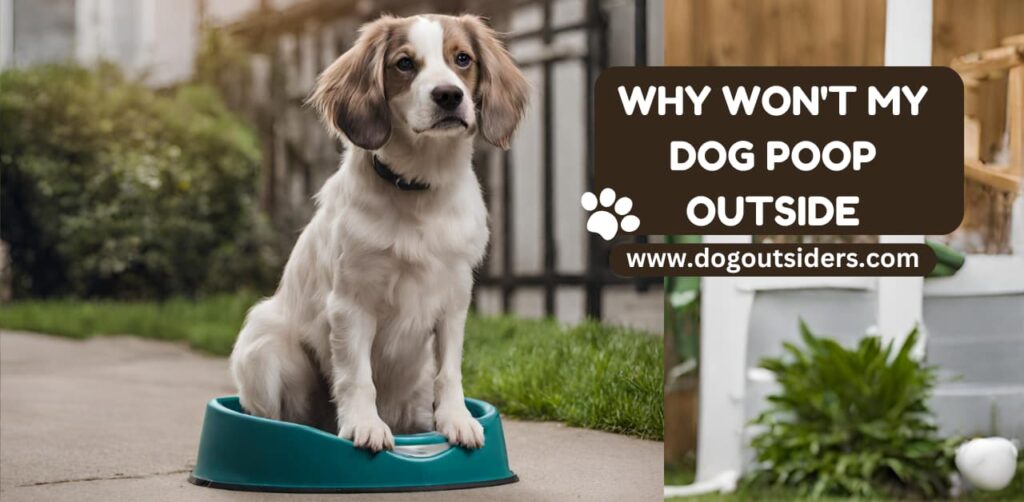
Daily Routine
Create a consistent schedule for your dog’s outdoor bathroom breaks. Take them out at the same times each day. I always make sure to take my dog out first thing in the morning, after meals, and before bedtime. This helps establish a routine.
Positive Reinforcement
Use positive reinforcement techniques when your dog poops outside. Praise them and give treats as rewards. I find that celebrating my dog’s successful outdoor potty breaks with treats makes a big difference in their behavior.
Individual Needs
Adjust the schedule based on your dog’s specific needs. Some dogs may need more frequent bathroom breaks than others. For example, if my dog seems anxious or uncomfortable, I take them out more often to ease their stress.
Positive Reinforcement System Creation
Treats
Use treats as a form of positive reinforcement when your dog successfully poops outside. Reward them immediately after elimination. Establish a routine where you give treats every time your dog goes potty in the designated outdoor area. This will create a strong connection between the action and the reward.
Verbal Praise
Verbal praise is another effective method to reinforce good behavior. A simple “good boy/girl” can go a long way in encouraging your dog to poop outside. When I trained my dog, I found that combining verbal praise with treats accelerated the learning process. The positive feedback reinforces the desired behavior quickly.
Ensuring Comfortable Outdoor Environment
Safe Space
Create a secure and stress-free outdoor area for your dog to feel comfortable while doing its business. Eliminate any potential threats or distractions in the yard. Ensure that the outdoor restroom is a place of patience and security, allowing your dog to relax and focus on the task at hand. This sense of safety will encourage your pet to use the designated area for both peeing and pooping.
Inviting Elements
Introduce familiar scents or favorite toys in the outdoor space to make it more appealing for your dog. These comforting items will help create a positive association with the designated place.
By incorporating elements that your dog loves, such as its favorite treats or toys, you can make the outdoor environment feel like an extension of its home. This familiarity will encourage your pet to feel at ease and more willing to relieve itself outside.
Comfort Considerations
Check for any discomfort-inducing factors that may hinder your dog from pooping outside. Ensure that the temperature is suitable and that the terrain is not too rough for your pet’s paws.
Avoid sudden changes in the environment that could unsettle your dog. Gradually introduce new elements to the outdoor space to allow your pet to adjust without feeling overwhelmed by the change.
Addressing Health Issues Impact
Monitor Changes
When monitoring your dog’s health, pay close attention to any changes in their eating habits or stool consistency. These variations could indicate potential underlying health issues affecting their bathroom behavior.
I’ve found that keeping a journal can be helpful. Document what your dog eats and how often they go outside. This information can be valuable when discussing concerns with a veterinarian.
Consult Veterinarian
If you notice persistent changes in your dog’s bathroom routine, it’s essential to seek professional advice. A veterinarian can conduct tests to identify any health issues causing discomfort.
Consulting with a vet is crucial for accurate diagnosis and treatment. They may recommend dietary adjustments or medications to alleviate digestive problems.
Follow Treatment Plans
Once a diagnosis is made, it’s important to follow through with any prescribed treatment plans diligently. These plans are designed to address the root cause of the issue impacting your dog’s ability to poop outside.
Remember, consistency is key when implementing treatment plans. Keep track of any improvements or setbacks and communicate these changes with your vet.
Consulting Veterinarian Necessity
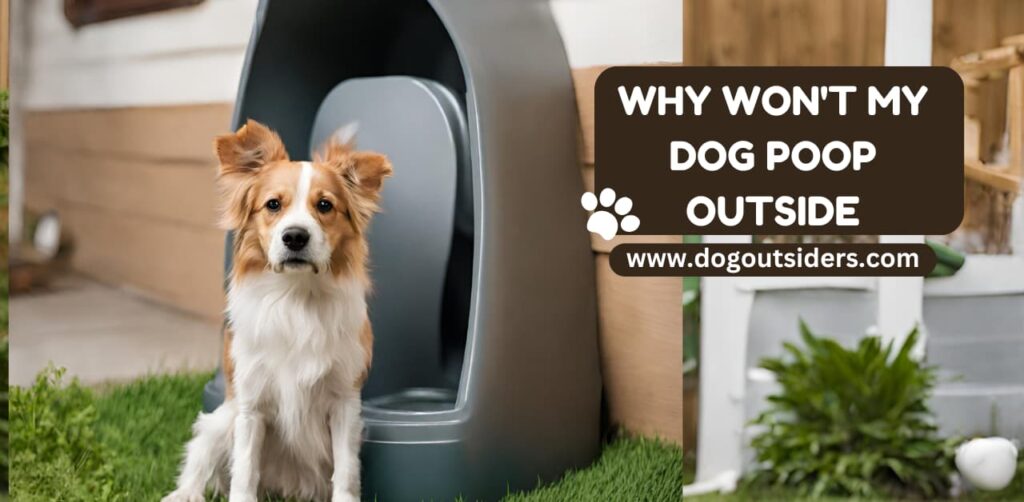
Professional Guidance
If your dog consistently refuses to poop outside, it’s time to seek advice from a veterinarian. They can provide valuable insights into the underlying reasons for this behavior.
Seeking professional help is crucial when standard training methods fail to yield results. Your vet can offer tailored solutions based on your dog’s unique needs and behaviors.
Health Concerns Discussion
Discuss any potential health concerns with your veterinarian to rule out medical issues causing your dog’s reluctance to eliminate outdoors.
Your vet will conduct thorough examinations and tests to identify any health conditions that might be contributing to this problem. It’s essential to address these issues promptly for your dog’s well-being.
Professional Help Indicators
Certified Trainer
Consider seeking assistance from a certified dog trainer for specialized guidance in addressing your dog’s reluctance to poop outside. These professionals possess the expertise to analyze your pet’s behavior and provide tailored solutions.
Behavioral Specialist
Look for indicators such as consistent indoor accidents or extreme anxiety during outdoor walks, which may signal the need for intervention by a behavioral specialist. These experts can identify underlying issues causing your dog’s behavior.
Collaborate with a professional to develop a customized training plan tailored to your dog’s specific needs and challenges. By working closely with an experienced professional, you can address the root causes of your dog’s reluctance to relieve themselves outdoors effectively.
Encouragement Strategies for Outdoors
Playtime Rewards
Use playtime or interactive games as rewards for successful outdoor eliminations. Engaging in a fun activity after your dog poops outside reinforces the positive behavior. This creates a positive association between eliminating outdoors and enjoyable experiences.
Incorporate activities like fetch, tug-of-war, or hide-and-seek as rewards for your dog’s good behavior. These playful interactions not only serve as rewards but also strengthen the bond between you and your furry friend. Remember to keep these play sessions short and exciting to maintain your dog’s interest.
Enthusiastic Praise
Encourage your dog with enthusiastic praise and physical affection when they poop outside. Dogs thrive on positive reinforcement, so lavish them with praise when they eliminate in the designated outdoor area. Use a cheerful tone of voice and offer gentle pats or belly rubs to show your approval.
Express genuine excitement and happiness when your dog successfully eliminates outside. Your enthusiasm will motivate them to repeat the behavior in the future. Consistent praise helps reinforce the desired action and encourages your dog to continue eliminating outdoors.
Gradual Acclimation
Incorporate short outdoor training sessions to gradually acclimate your dog to eliminating outside. Start by taking your dog out frequently, especially after meals or naps, to increase their chances of going potty outside. Be patient during this process as it may take time for your dog to adjust.
Gradually extend the duration of outdoor training sessions as your dog becomes more comfortable with eliminating outside. Keep a close eye on their body language and cues to anticipate when they need to go potty. With consistent training and positive reinforcement, your dog will eventually learn to prefer outdoor elimination.
Conclusion:
After diving deep into why dogs refuse to poop outside, I’ve uncovered key factors like territory preference, routine establishment, positive reinforcement, and health considerations. Understanding these aspects can help us tackle this common issue effectively. By creating a comfortable outdoor environment, addressing health concerns promptly, and seeking professional guidance when needed, we can guide our furry friends towards embracing the great outdoors for their potty needs. Remember, consistency is key in implementing encouragement strategies that make outdoor potty time a positive experience for your dog. Let’s work together to ensure our canine companions feel at ease and happy while doing their business outside.
FAQ’s:
Dogs may refuse to poop outside due to fear, discomfort, or lack of routine. Identify any stressors, ensure a comfortable environment, establish a consistent schedule, and use positive reinforcement to encourage outdoor elimination.
Observe where your dog tends to eliminate indoors. This area may indicate their preferred territory. Use this information to gradually transition them to outdoor elimination by associating the outdoors with positive experiences and rewards.
If your dog’s refusal persists despite efforts or if there are sudden changes in elimination habits, consult a veterinarian. Health issues like gastrointestinal problems or anxiety could be contributing factors that require professional evaluation and treatment.
Use high-value treats as rewards for outdoor elimination, create a positive association with the outdoor environment through play and praise, establish a consistent routine, and offer verbal encouragement during the process. Patience and consistency are key in reinforcing desired behavior.
Professional help may be necessary if your efforts have been unsuccessful or if there are underlying behavioral or health issues causing the problem. A certified dog trainer or animal behaviorist can provide tailored guidance and support in addressing your dog’s specific needs.

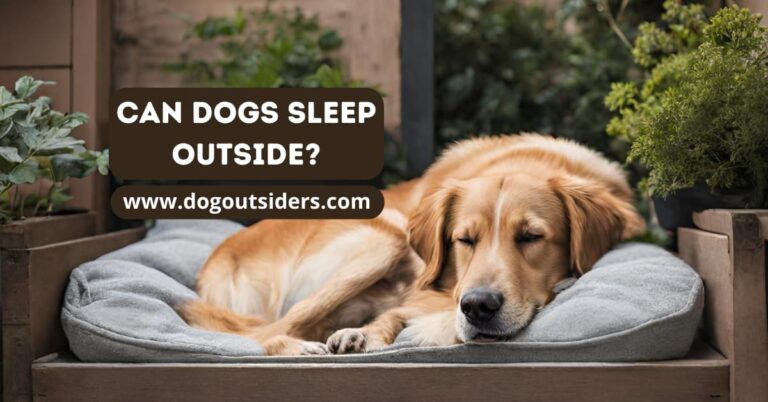
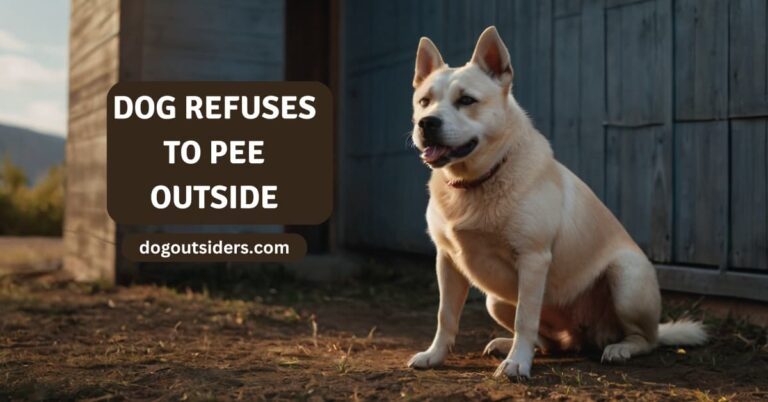
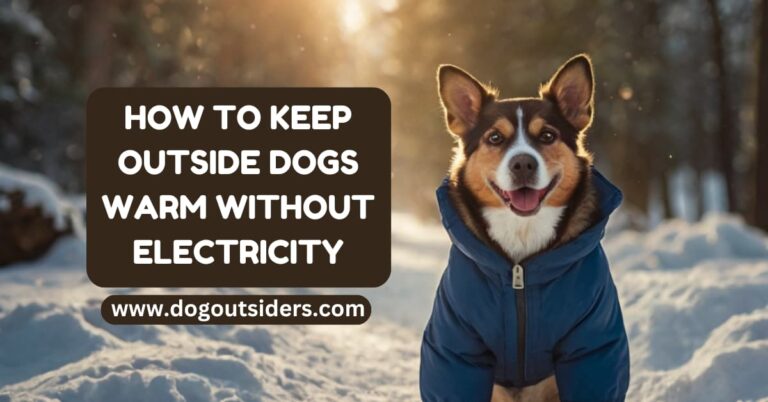
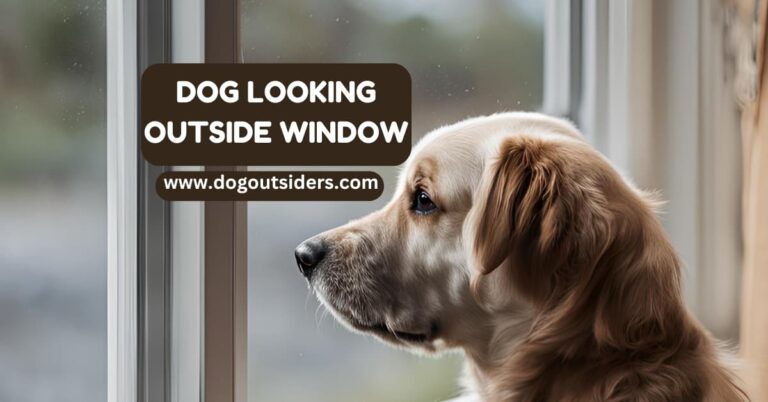
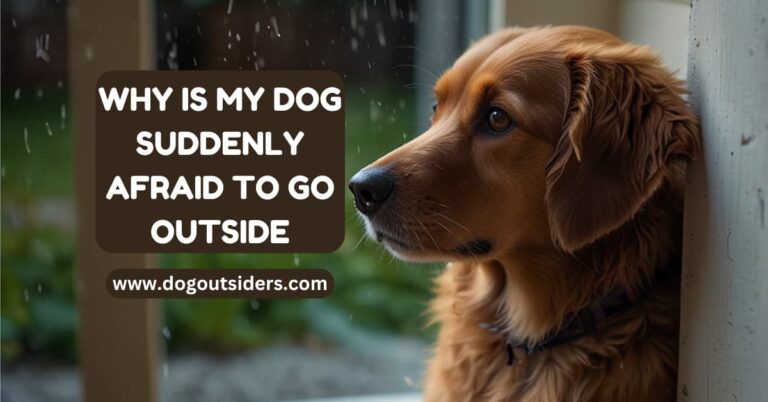
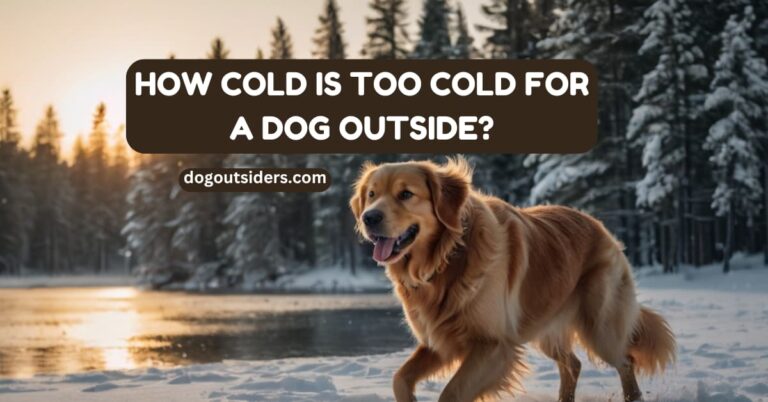
3 Comments